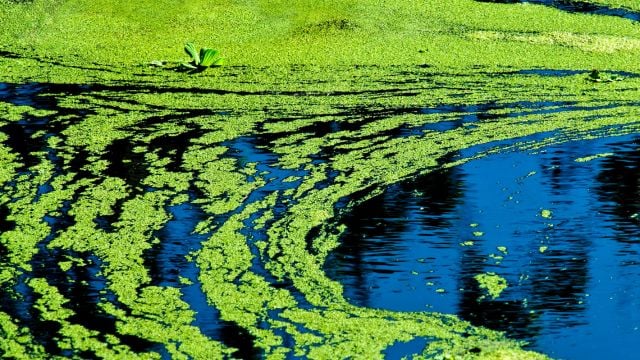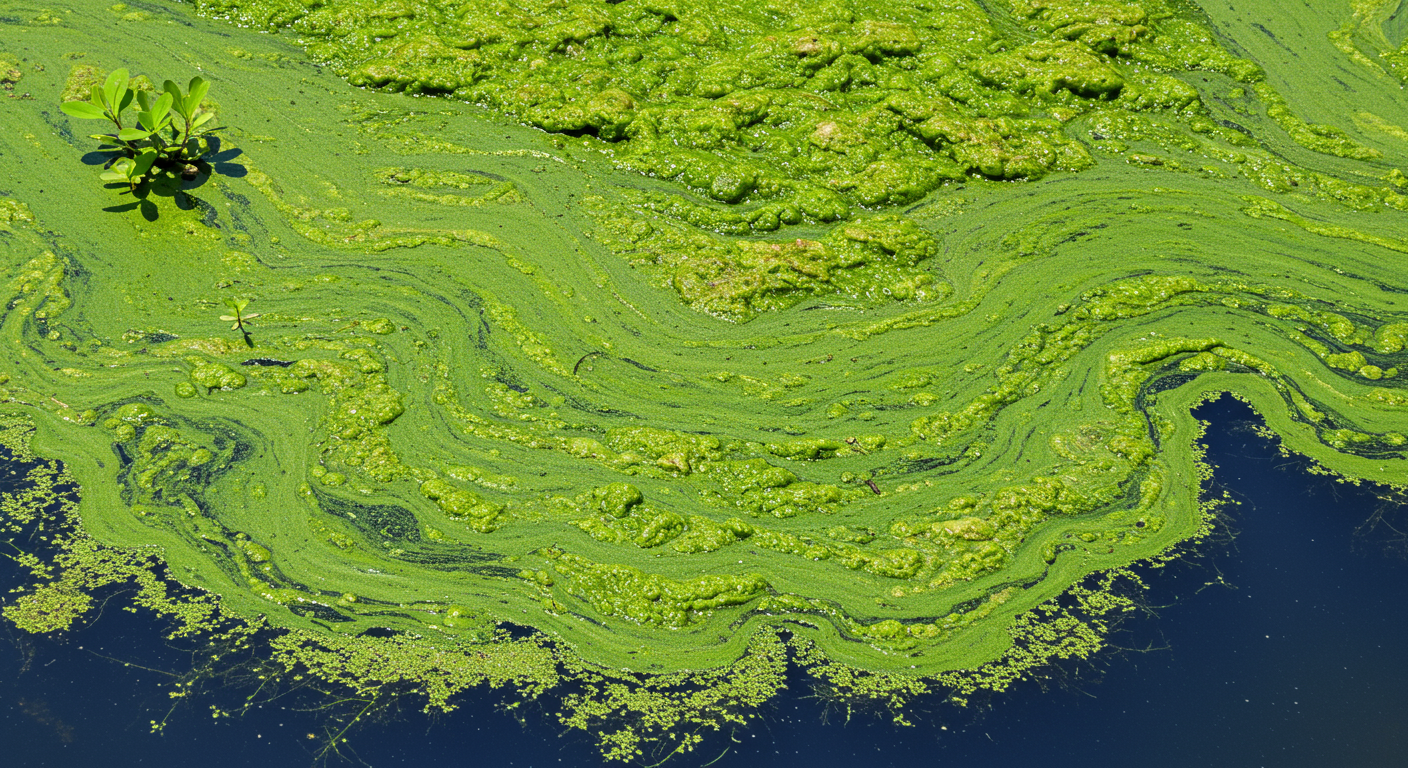Introduction to Cyanobacteria and Blue-Green Algae
Why are Water Testing Kits so important? Well, there things such as Cyanobacteria, whic is also often referred to as blue-green algae, and are microorganisms found in various water bodies like lakes, rivers, and ponds. These bacteria can produce toxins that pose serious risks to both humans and animals. While they naturally occur in freshwater ecosystems, their growth can spiral out of control, especially during warmer months, leading to harmful algal blooms (HABs).
What are harmful algal blooms (HABs)? Imagine walking by a lake and noticing the water has turned a murky green, like pea soup. That’s not just unappealing—it's potentially dangerous. These blooms can release toxins that affect the liver, nervous system, and skin of anyone who comes into contact with the water. Pets, children, and recreational swimmers are particularly vulnerable to these toxins.
Let's dive into Cyanobacteria and Blue-Green Algae.
Click here to follow my Instagram.
Click here to follow my Facebook.
Click here to visit our blog page!
Email: [email protected]
Phone: (416)-220-7045
Address: 55 Director Ct, Woodbridge ON, L4L 4S5
The Dangers of Bacteria and Blue-Green Algae in Water
You might be wondering: if bacteria and blue-green algae are so harmful, why aren’t more people talking about them? The truth is, waterborne pathogens are often invisible threats. Unlike debris or pollution that you can see floating on the water’s surface, bacteria like cyanobacteria are microscopic.
When blue-green algae proliferate, they release cyanotoxins into the water, hence why it is important to look into Water Testing Kits when making any move.
Bacteria and blue-green algae can:
● Cause rashes, eye irritation, and respiratory issues in humans.
● Be fatal to pets if ingested.
● Lead to the closure of recreational water areas.
● Damage aquatic ecosystems by depleting oxygen levels and killing fish.
What Is a Water Testing Kit and How Does It Work?
A water testing kit is a simple yet powerful tool designed to detect the presence of contaminants in water, including bacteria and blue-green algae. These kits are commonly used by homeowners, environmental agencies, and industries to ensure that the water they’re dealing with is safe for consumption or recreational use.
Most Water Testing Kits come with test strips or reagents that react when mixed with water samples. The results are typically easy to interpret, allowing users to detect the presence of toxins, bacteria, and other harmful substances in just minutes.
Top 3 Reasons to Use a Water Testing Kits for Cyanobacteria and Blue-Green Algae Detection
Reason 1: Protect Public Health and Safety
When cyanobacteria and Blue-Green Algae levels are high, the water becomes unsafe for human contact. Many people unknowingly expose themselves to harmful toxins when swimming, fishing, or even drinking contaminated water. With a water testing kit, you can quickly identify whether the water is safe or needs immediate action.
Did you know? Blue-green algae have been linked to severe gastrointestinal issues and even liver damage when ingested. In some extreme cases, prolonged exposure can increase the risk of serious diseases like liver cancer. Having a testing kit on hand allows you to monitor water quality regularly and avoid these risks.
Reason 2: Safeguard the Environment
Beyond human health, cyanobacteria and blue-green algae can have a devastating impact on the environment. When these harmful blooms take over a water body, they reduce oxygen levels, leading to "dead zones" where aquatic life struggles to survive.
By using water testing kits to monitor bacteria levels, local communities can take preventative action before the situation worsens. Early detection is key to implementing solutions that can restore balance to the ecosystem.
Reason 3: Ensure Compliance with Water Quality Standards
For industries that rely on water—whether it’s agriculture, fisheries, or local water treatment plants—complying with water quality standards is essential. Regularly testing water sources ensures that businesses meet environmental regulations and avoid costly fines or legal issues.
With a water testing kit, you can maintain the highest standards of water safety and demonstrate that you’re doing your part to protect the environment.
How to Use a Water Testing Kit Effectively
Using a water testing kit is straightforward, but there are some best practices to ensure you get accurate results. Here’s a step-by-step guide:
1. Collect the Water Sample: Make sure to collect water from a well-mixed, representative area of the water source.
2. Follow the Instructions Carefully: Each kit comes with specific guidelines on how to use the test strips or reagents.
3. Wait for the Reaction: Most kits take a few minutes to react, so be patient.
4. Compare the Results: Use the color chart or indicator provided to interpret the results.
Signs of Cyanobacteria and Blue-Green Algae Contamination
How do you know if your water is at risk? Here are some telltale signs that your water might contain harmful bacteria or blue-green algae:
● The water has a green or bluish tint, often with a paint-like consistency.
● There’s a foul, musty odor coming from the water.
● Dead fish or wildlife are found near the water.
● People who have come in contact with the water report rashes, headaches, or nausea.
Available Types of Water Testing Kits
Water testing kits come in various forms depending on your needs. Some kits are designed specifically to detect bacteria like cyanobacteria, while others focus on general contaminants like nitrates, chlorine, and pH levels.
Here are a few common types:
● Test Strips: Easy to use and offer quick results.
● Digital Meters: Provide more precise readings, but are usually more expensive.
● Reagent Kits: Use chemical reactions to identify contaminants, often used by professionals.
DIY vs. Professional Water Testing Kits: Which Is Better?
Should you test your water yourself, or hire a professional? It depends on the level of contamination and how frequently you need to test the water.
DIY kits are great for regular, quick checks, especially for homeowners and recreational areas. However, for more complex water bodies or if you suspect severe contamination, hiring a professional ensures more thorough results.
Interpreting the Results of Your Water Test
Once you've used your water testing kit, it's crucial to understand what the results mean. Here’s how to interpret common findings:
● Low Bacteria Levels: Generally safe, but regular monitoring is recommended.
● Moderate Levels: Exercise caution and consider avoiding water contact.
● High Levels: Immediate action is required. This could involve notifying local health authorities or treating the water.
Steps to Take If You Find Cyanobacteria in Your Water
What should you do if your water test comes back positive for cyanobacteria? Follow these steps to protect yourself and others:
1. Avoid Contact: Stay out of the water and prevent pets from drinking or swimming in it.
2. Notify Local Authorities: Report the contamination to environmental or health agencies.
3. Seek Treatment Options: In some cases, chemical treatments like algaecides can help reduce cyanobacteria blooms.
Preventative Measures to Reduce Bacterial Contamination
Preventing the growth of harmful bacteria and algae starts with good environmental practices:
● Limit Nutrient Runoff: Reduce the amount of fertilizers and pesticides entering water bodies as they encourage algae growth.
● Maintain Proper Septic Systems: Ensure that septic systems are regularly inspected to avoid leaks into water sources.
● Encourage Vegetation Growth: Planting native grasses and trees around water bodies can help filter out pollutants and prevent erosion, which feeds bacteria and algae.
Conclusion: Why Water Testing Kits Are Crucial
In conclusion, water testing kits are indispensable tools for anyone concerned about the quality of their water, whether it’s for drinking, recreation, or environmental health. Identifying bacteria and blue-green algae early on can prevent serious health risks, protect ecosystems, and ensure compliance with water quality standards. By using a water testing kit, you are taking proactive steps to safeguard not just yourself, but your community and the environment.
FAQs
1. What is the difference between cyanobacteria and blue-green algae?
Cyanobacteria and blue-green algae are often used interchangeably. Cyanobacteria are the scientific term for the bacteria responsible for creating harmful blooms, while "blue-green algae" is a common name due to their appearance.
2. Can water testing kits detect other contaminants besides blue-green algae?
Yes, many water testing kits can detect multiple contaminants such as bacteria, nitrates, and heavy metals, depending on the kit you choose.
3. How often should I test my water for cyanobacteria?
If you live near a lake or pond, especially one prone to algal blooms, testing water at least once a month during warmer months is a good practice.
4. Are water testing kits difficult to use?
Most water testing kits are designed to be user-friendly, with simple instructions and easy-to-read results, making them accessible to the general public.
5. What should I do if I get a positive result for cyanobacteria in my water?
Avoid using the water, keep pets and people away, and notify local health authorities for further guidance on treatment and safety measures







